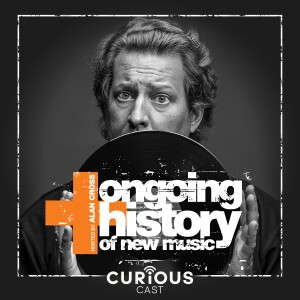
Once upon a time, I was deep into collecting bootleg recordings of my favourite bands…and this obsession came from a really good place…at least I thought so…
I’d already bought all the albums and singles, collected a bunch of memorabilia, snapped up the t-shirts, and gone to all the shows…but I wanted more…the only place let to go was unofficial—read: illegal—releases…
Almost everything I accurate was on cd…some were burned discs that I traded for with other hardcore fans…I might go to eBay once in a while…there were a few stores I knew that stocked these discs for special customers…and whenever I went overseas to certain countries were copyright laws were lax—Russia, Indonesia, a few places in the Caribbean—I’d be sure to visit the market stalls to see what they had…I honestly wasn’t trying to rip off or hurt anyone…I just loved these bands so much that I needed to own a copy of everything they did…once, when I talked about my bootlegs on the radio—probably not a smart idea—I got a letter from the head of a recorded industry organization calling me “morally reprehensible” …
But over the years, these hardcopy bootlegs became harder and harder to find, thanks to crackdowns on illegal exploitation of intellectual property, the disappearance of these record stores, and, most importantly, the rise of online file-sharing…by 2008 or so, the physical bootleg market had all but collapsed…I haven’t acquired anything new for my collection for almost a couple of decades now…
But I’ve never lost my fascination for this recordings…where did they come from?...how were they made?...who distributed them?...did they really hurt artists and the industry?...and what kind of legacy did old-school bootlegs leave behind?...
I’ve found some answers to those questions and more…this is another look at bootlegging, part 2…
Learn more about your ad choices. Visit megaphone.fm/adchoices
view more
More Episodes
The Tool Odyssey
 2017-09-27
2017-09-27
 392
392
 2017-09-27
2017-09-27
 392
392
The Last Hours Of...
 2017-09-13
2017-09-13
 454
454
 2017-09-13
2017-09-13
 454
454
Unfortunate Sonic Coincidences
 2017-09-11
2017-09-11
 317
317
 2017-09-11
2017-09-11
 317
317
Catching Up With The Black Keys
 2017-08-30
2017-08-30
 138
138
 2017-08-30
2017-08-30
 138
138
Spectacular Acts of Self Sabotage
 2017-08-22
2017-08-22
 180
180
 2017-08-22
2017-08-22
 180
180
Chester Bennington and Linkin Park
 2017-07-25
2017-07-25
 141
141
 2017-07-25
2017-07-25
 141
141
Inside The Foo Fighters
 2017-07-19
2017-07-19
 165
165
 2017-07-19
2017-07-19
 165
165
10 Terrible Career Moves
 2017-06-28
2017-06-28
 292
292
 2017-06-28
2017-06-28
 292
292
RockNRoll Drugs
 2017-06-21
2017-06-21
 128
128
 2017-06-21
2017-06-21
 128
128
Remembering the Beastie Boys Part 2
 2017-06-14
2017-06-14
 132
132
 2017-06-14
2017-06-14
 132
132
Remembering the Beastie Boys Part 1
 2017-06-09
2017-06-09
 117
117
 2017-06-09
2017-06-09
 117
117
Chris Cornell: 6 Degrees of Separation
 2017-05-19
2017-05-19
 51
51
 2017-05-19
2017-05-19
 51
51
Why Punk Happened
 2017-03-22
2017-03-22
 113
113
 2017-03-22
2017-03-22
 113
113
Rock And Roll Myths
 2017-03-15
2017-03-15
 165
165
 2017-03-15
2017-03-15
 165
165
The Rise and Fall and Rise of Blink 182 Part 3
 2017-02-17
2017-02-17
 87
87
 2017-02-17
2017-02-17
 87
87
012345678910111213141516
Create your
podcast in
minutes
- Full-featured podcast site
- Unlimited storage and bandwidth
- Comprehensive podcast stats
- Distribute to Apple Podcasts, Spotify, and more
- Make money with your podcast
It is Free
- Privacy Policy
- Cookie Policy
- Terms of Use
- Consent Preferences
- Copyright © 2015-2024 Podbean.com



